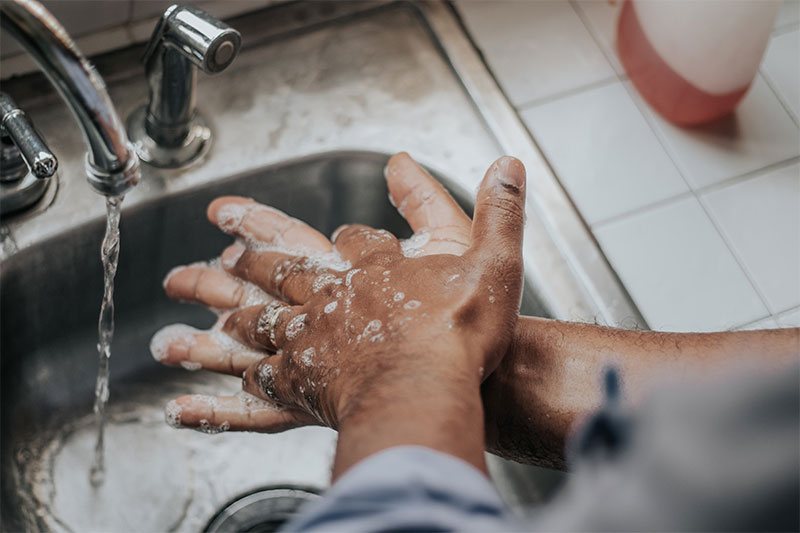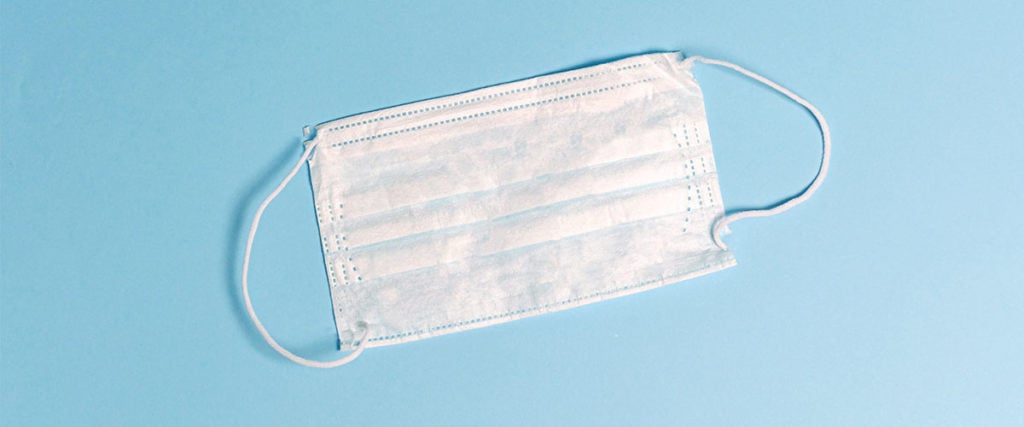Cities worldwide are enforcing different social distancing measures in the midst of the current coronavirus outbreak. We cover the definition of social distancing – and how to best practice it.
The coronavirus pandemic has led some of the world’s biggest cities to issue social distancing as a preventative measure to slow the spread of the virus. First introduced in 1916 during the New York City polio epidemic, ‘social distancing’ (also called ‘physical distancing’) is a public health practice that aims to prevent sick people from coming into close contact with healthy people in order to reduce opportunities for disease transmission. While most are familiar with the term, the exact parameters of social distancing are still confusing to some. Read on to find out what social distancing actually involves, and why it is an important practice during the current pandemic.
Defining Social Distancing: What is it, and why is it important?
Social distancing is an important safety measure intended to minimise the risk of infection and the spread of a contagious disease. It refers to the practice of maintaining a physical distance of 1 metre (3 feet) from others and avoiding large gatherings at locations including gyms, movie theatres, stadiums, and even churches. Minimising close contact with others helps to flatten the curve by limiting one’s contact with infected people and contaminated surfaces. It also reduces both the chance of infection among high-risk populations and the burden on health care systems and workers alike.

How does social distancing differ from self-quarantine and self-isolation?
With the spread of COVID-19, words like ‘social distancing,’ ‘self-quarantine’ and ‘self-isolation’ have become buzzwords seemingly overnight, but with this newfound vocabulary comes some confusion. It is important to understand that these are not, in fact, interchangeable concepts and that each word applies to its own unique situation and demographic.
Self-quarantine applies to those who may have been exposed to or are at risk of catching the virus, including those who have recently travelled or been in contact with someone who has been infected. It is recommended that these individuals stay at home and away from others for a period of 14 days, with a no-visitors policy. If two weeks pass with no symptoms, they may resume their regular routine.
Self-isolation applies to those who are already sick and is designed to keep the infected away from others in order to prevent the spreading of the virus. This applies to those who have tested positive for the coronavirus, or who show symptoms but have yet to be tested. Self-isolation means staying indoors and avoiding all contact with others, leaving home only to receive medical attention on a case-to-case basis.
Social distancing refers to the practice of creating physical space between yourself and others to avoid catching or spreading the virus. While self-quarantining and self-isolating strictly prohibit going outside, social distancing simply discourages unnecessary contact with others. Those who are more especially susceptible to infection, such as the elderly or the immunocompromised, are at particular risk, and should therefore limit the time they spend outside of their homes to truly ‘essential’ outings.
What does social distancing entail?
With governments worldwide implementing various degrees of social distancing measures, it can be confusing to understand exactly what the practice involves. The degree to which social distancing measures are implemented vary from country to country – while some countries like Taiwan are keeping schools open for the time being, others have implemented a much stricter practice, with schools and ‘non-essential’ businesses closing down indefinitely.
For instance, in places like Hong Kong, Vietnam, Bangkok and Australia, non-essential establishments that attract large gatherings such as cinemas, gyms, exhibition or concert halls and other places of entertainment have been shut down for the time being, with talk of closing a greater variety of establishments soon. Most cities have chosen to issue a stay-at-home request, which means limiting outings to the essentials, such as shopping for basic necessities, for example, food and medicine, travelling for work purposes (but only where you cannot work from home) and medical appointments.
You might also like COVID-19: A Comprehensive Guide to Face Mask Hygiene

What are the best practices of social distancing?
While the rules of social distancing differ from city to city, health experts generally agree that large gatherings should be avoided. Non-essential use of public transport and travel should be postponed to avoid high-volume rush hour traffic, and working from home is highly encouraged when possible. The World Health Organisation (WHO) has also established basic principles to reduce the risk of contracting the virus, which include:
Frequently washing and sanitising your hands
Maintaining social distancing
Avoiding contact with your eyes, nose or mouth
Thoroughly disinfecting commonly touched surfaces areas
WHO also suggests remaining inside your home and going out only for truly essential activities, during which case a distance of at least 1 metre (3 feet) should be maintained from others at all times. Physical contact with others such as shaking hands or embracing should be avoided. In addition, those who feel unwell or are displaying flu-like symptoms should wear a cloth or paper mask and cover coughs and sneezes with disposable tissues or clothing.
Did you know: A study by the Massachusetts Institute of Technology (MIT) found that coughing and sneezing can spread droplets as far as 8 metres in warm, moist climates.
What are “essential” needs and services?
In general, essential needs include shopping for basic necessities (although this should be limited), fulfilling urgent medical needs, and travelling to or from work in instances where working from home is not possible, although this also varies from country to country. Essential services refer to those that affect the life, health or personal safety of the general population, including supermarkets, convenience stores, pharmacies, medical services, post offices, banks and emergency services.
Misconceptions about Social Distancing
With the arrival of the pandemic comes a host of mixed messages and misinformation around the importance of social distancing. Here are some common myths about social distancing – debunked:
Only the elderly, those at high-risk and those who have been infected need to stay home and limit contact with others.
Anybody can be infected with COVID-19, even if they don’t show symptoms. Being out and about increases the risk of infection and transmission of the virus. That’s why it’s critical that everyone does their part in protecting the most vulnerable and flattening the curve by avoiding large crowds and social gatherings.
Coronavirus is only spread through coughing and sneezing.
The virus can be spread in three ways:
From large droplets produced by coughs and sneezes
From breathing in the airborne virus
From contact with contaminated objects or surfaces
Social distancing means isolating yourself from others completely.
Social distancing does not mean avoiding social connections – rather, it refers to maintaining a physical distance between people. In fact, it is more important than ever to offer emotional support to loved ones during these stressful times, even if you’re apart, as studies show that loneliness can negatively affect both mental and physical health. There are plenty of social apps, from party app Houseparty to the Chrome extension Netflix Party, that can help you stay connected with loved ones.

What effects does social distancing have?
Staying at home helps to protect not only yourself, but others as well. By practising social distancing, we can slow the transmission rate of the virus (also known as flattening the curve) and help to protect those who are vulnerable or at risk by minimising the risk of infection. A decline in infection rates can also help to keep the pandemic manageable for healthcare workers.
How can you maintain social distance from people you live with or care for?
Those who feel unwell or believe themselves to be infected should keep away from other people, including those who live in the same household, by keeping themselves in one room as much as possible. If you share a bathroom, be sure to keep the area as clean as possible, close the toilet lid before you flush, and disinfect regularly.
What are the potential negative impacts of social distancing, and how can we avoid them?
Social isolation has been linked to illness and premature death, sharing the same level of risk as obesity, high blood pressure, and smoking. A study by Harvard Health has found that having strong interpersonal relationships can help to boost mental and physical health, which is why it’s important to maintain connections.
This article was last updated on 20 April 2020.
Related Articles
A Beginner’s Guide to a Furlough – and What to Do Next
8 Collaboration Tools for Teams Working From Home in 2020
Houseparty: The Viral Video Alternative to Zoom Amidst COVID-19?





